Link exchange has proved to be one of the most effective link building tactics, as it’s simply a win-win situation.
Even in the last few years, when the world appreciates unobtrusive and truthful content more and more, link exchanges have kept their strong position among link builders. At the same time, newly inserted links have become more naturally added to the existing web pages.
According to statistics, 51.6% of experts continue to use it. This fact testifies to the significant benefits link exchange brings to SEO strategy. However, one cannot get the most out of this tactic without constant work on link exchange partners’ network development.
This article outlines the main advantages of collaborating with link exchange partners. You will understand what the perfect partner should look like and where to find yours.
Let’s dive deep!
Why Work With Link Exchange Partners?
Link exchanges work best in the long-term perspective. Sometimes, it could be a one-time collaboration between two websites. However, the majority of link builders and agencies work on the development of long-term cooperation and the creation of the partners list.
The reason for this is that being ranked in the first ten results in Google search is a challenging task. Primarily, it is so if you’re not a world-known company, such as Apple, Zoom, Booking.com, or others.
In such cases, the availability of constant link exchange partners opens up a wide range of opportunities:
- Simplifies the achievement of initial link building goals, such as increasing website traffic, establishing the domain authority, and ensuring the overall success of the SEO campaign. All mentioned above are easier to reach with a link exchange partners’ base since you ensure regular backlinks from different domains.
- Enables A-B-C link exchange. Google recognizes the constant links from the same domain, as well as reciprocal links. And though such exchanges still work and increase the website authority and domain rate, they bring less growth than one-way links. A-B-C link exchange resolves this issue. During this collaboration, Website A provides a backlink to Website B, Website B links to Website C, and Website C adds a link to Website A. Such a triangle ensures that there is no direct link exchange and is easy to organize if you have constant partners.
- Increases the variety of websites that provide backlinks. Each partner has its own network. So, you can agree to provide a link in return for the representation to some new partner. Or you can go via partner network exchange. Any way reveals a chance for new connections and new backlinks.
- Guest posts exchanges. One more great option to collaborate is to do an article contribution. It will increase your presence on the partner’s website (the same as the partner’s presence on yours) and will help you build closer websites and audience connections.
The mentioned benefits are not all you can get, but the major work direction you can choose. There is also a space for creativity and unusual approaches. And, if you have some that you believe will work, go ahead with its implementation!
Profile Of A Great Link Exchange Partner
According to Forbes data, there are approximately 200 million actively maintained and visited websites on the Internet in 2023. With such a vast number, SEO outreach becomes essential in identifying and connecting potential link exchange partners. But how do you choose the sites with whom you can build a long-term collaboration?
Let’s go through the key indicators that may serve as guidelines during the selection. They are website qualities, online presence and personification, and communication flow.
Website qualities
Starting from the website qualities is a good approach as they can be easily measured using quantitative data. Here are the most important parameters you should check:
Website traffic defines how many regular visitors a website or webpage has. If the website isn’t actively visited and used, your link there won’t bring you new leads or, at least, visits.
Also, you should pay attention to which countries the traffic on the website is coming from and compare it with your audience. For example, if the primary audience of your site is from the USA, you will most likely want to build links from a site with the same audience.
One more thing to know is the necessity of steady traffic growth for your domain. Significant jumps can be recognized as malicious and will negatively impact your website authority.
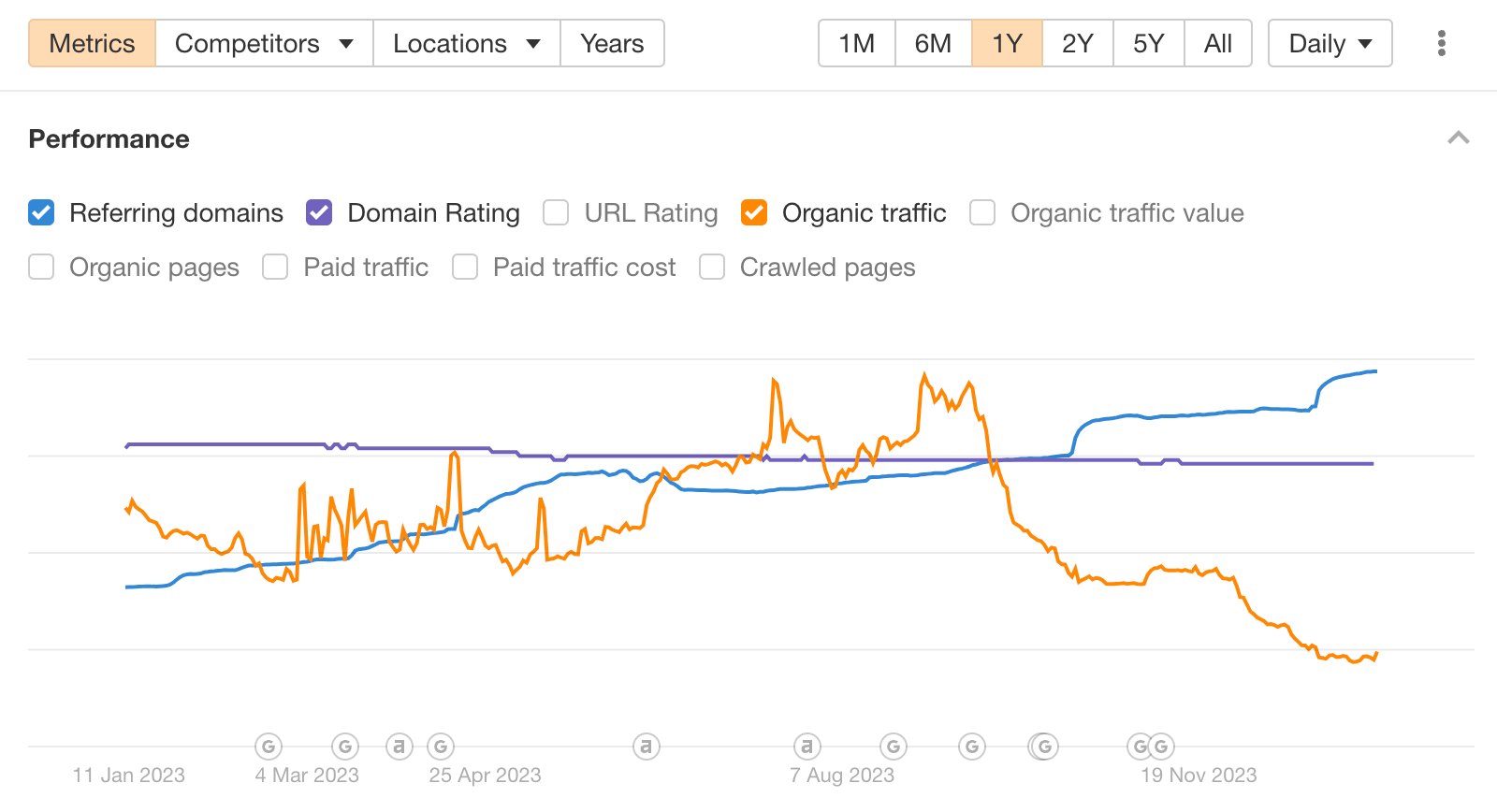
Example of traffic jumps
This metric aims to predict how likely a domain or a specific web page will rank high on a search engine results page (SERP). Its grounds come from the analysis of all backlinks to the specific domain, their quality and quantity, the authority of the website that provides those links, and multiple other parameters.
You can face various namings and calculation approaches of domain authority. They differ based on the tool you use. For instance, Ahrefs calls it Domain Rating (DR), and its competitor Moz has proceeded with Domain Authority (DA) terminology.

You should check if the website is relevant to your topic. If you’re building links to the e-commerce landing page, a partnership with an eCommerce email marketing agency for online retailers would be much more aligned with your goals than a website about animal food.
Check if the website has a company blog, where you can add links and even contribute an article. This blog should be regularly updated with new high-quality articles. If you’re looking to optimize your website’s performance further, consider consulting with a conversion rate agency for expert insights and strategies.
Pay attention to whether the content is written by a live person or by AI tools. If you see a high percentage of the second one, you should thoroughly think about future collaboration since such articles don’t attract the attention of the audience and won’t bring many visits to your website.
Review the links already added to the website and verify if they aren’t too promotional, too spammy, or too frequent in the text. The articles overwhelmed with links are bad practices.
Also, check the quota of outbound and inbound links and where they lead. If the domain often links to unreliable sites, casinos, and other grey niche websites, the backlinks there will be classified as of poor quality. They not only won’t bring benefits to your domain authority but also can damage it.
Before starting, define the indicators you’re okay with going within best-case and worst-case scenarios. Of course, you’ll make the final decision on each specific website after you see it, but understanding what suits you and what doesn’t significantly simplifies the process in uncertain situations.
Online presence and personification
A good link exchange partner should have not only a website but also a real person you can contact. Today, a well-designed website is essential for building trust with visitors and stakeholders. Impersonal websites, regardless of their content, often struggle to gain the same level of trust as those with a clear and engaging design.
A great supplement will be a LinkedIn account of the company and the person who represents it. The profile should include real photos, a bio, and contact information and show that the person is trustworthy and reliable. The same is true with other social networks: the more information there is about a person, the better.
Let’s take a look at a bad example of a LinkedIn profile. It doesn’t have a photo and background picture. A full name and a profession/personality description are also missing.
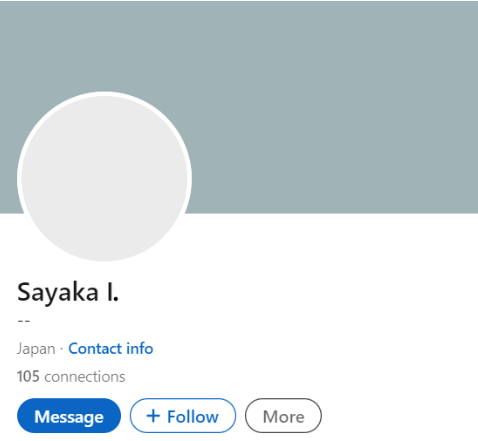
Here is a good example of how your LinkedIn profile should look like. This profile has a photo of a real person and is of good quality. Also, there is a background picture, which can be a logo of the company you work at or just correspond to your professional interests. The person used his full name and added a description of his occupation.
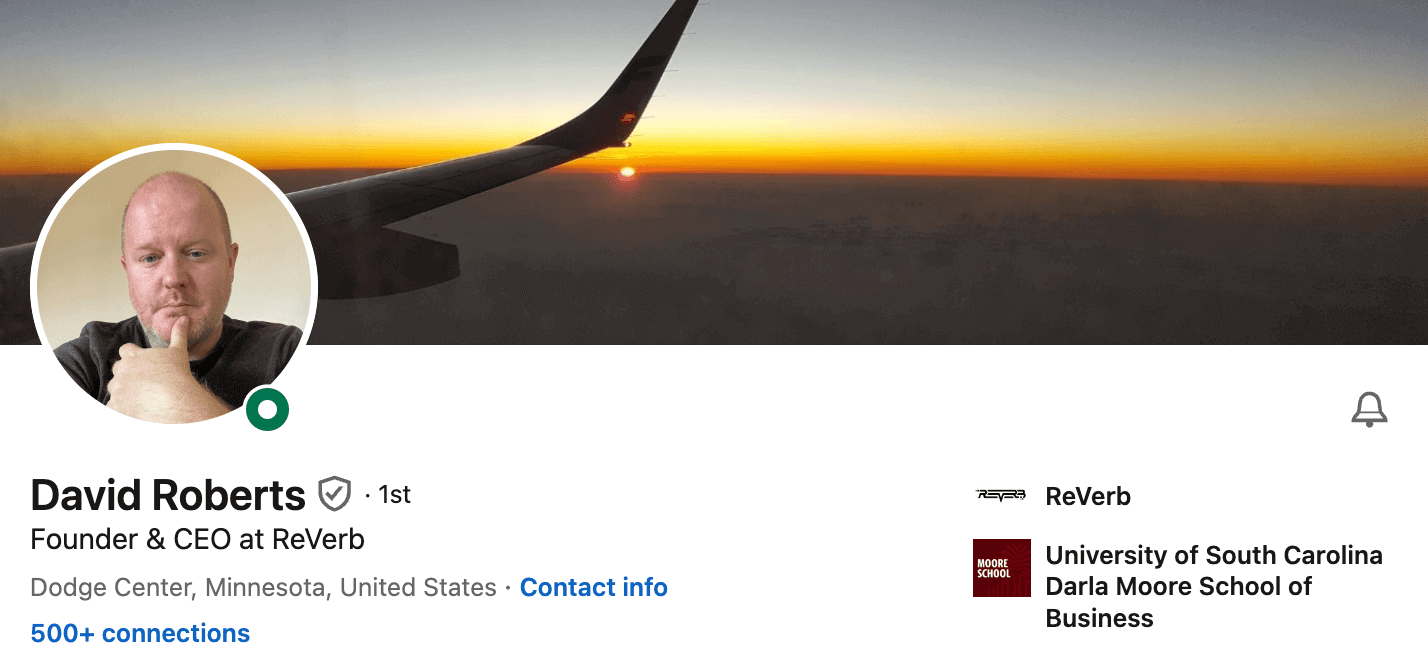
Now, think about which person you trust more and would like to collaborate with. Surely, the second profile is more trustworthy. Moreover, ensure your LinkedIn profile corresponds to the requirements and shows you as a person one can trust.
Communication flow
By establishing communication with a potential link exchange partner, you can also learn a lot about the person and his approaches to the work. Since the first minutes, consider the following:
- How easy is it to communicate with this person?
- Do you understand each other’s requirements?
- How interested the potential link exchange partner is in building a long-term partnership?
You can start a collaboration from a few link exchanges to see if the potential partner meets your agreements and if you can rely on this person. Once you’re certain of his reliability, you can proceed with a long-lasting link exchange partnership.
AI chatbots can be used to automate the process of contacting potential partners. They can send out emails to potential partners and follow up with them if they don’t respond. This can free up your time so that you can focus on other tasks.
Be sure to create a joint document where you and your partner will keep track of your exchanges to avoid a situation where one party has provided more links than the other. This will speed up communication and exchange due to better organization of your cooperation.

Where To Find The Right Link Exchange Partners?
There could be various sources of link exchange partners. The main point here is to find the most suitable for you.
Let’s check the main of them to understand their essence and differences.
Personal connections
This is a great source to start from. Check your connections: the people you worked or collaborated with before or who are simply in your list or notes. Contact them via the channel you connected to before and ask if they’re interested in link exchange as a ecommerce link building strategy.
Normally, this approach won’t give you a huge amount of new partners, but they will be the most reliable ones. Also, a conversion from a one-time link exchange to a long-term partnership is high for this case.
Slack channels
Link exchange channels in Slack are also good sources of new link exchange partners. Link builders often have dozens of such communities and are open to collaboration. Moreover, many of them are looking for a link exchange partner, too.
If you have no link exchange channel in Slack yet or want to find a new one, there are two options:
- Ask your existing partners if they can invite you to some Slack community. You may even offer a link in return.
- Search for the channels on the Internet and send an application to join them. For instance, Belkins agency offers to join their Slack community by filling in a form.
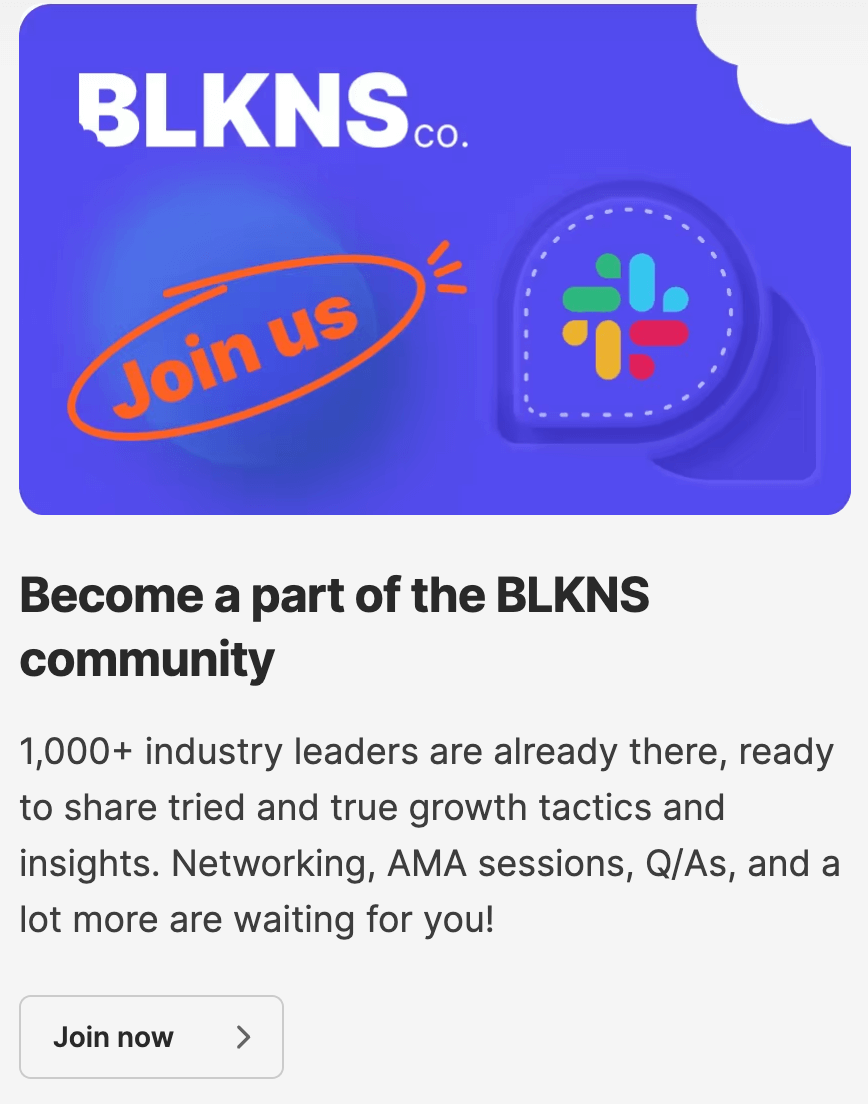
You can find a lot of new partners via Slack. However, you should be careful with the partners’ choice. Focus on the fact that the exchange should be mutually beneficial. This is the key to a successful link exchange partnership.
However, there are cases where the link builders offer backlinks on websites of bad quality, add nofollow links, or don’t give a link in return at all. To avoid such disappointment, start collaboration with small steps.
LinkedIn
You can also find link exchange partners on LinkedIn. You can reach them out directly in this network or proceed via email. The first option is better since it will help to establish more easy-going relations.
To find people that suit your link exchange partner profile, configure the search per the following criteria:
- Profession
- Location
- Connections
- Service Categories
- Industry
- Profile Language
- Talks about.
Afterward, check the profiles of the users you’ve got and the websites they manage. If they suit your requirements, proceed with outreach.
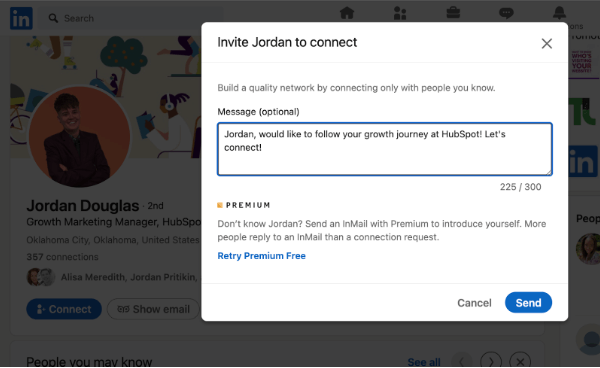
Email
One more way you can reach out to new link exchange partners is by email. Before starting, you have to define the list of contacts you will write to.
There are multiple ways you can get the potential partners’ roster:
- Ask your existing partners to share some of their lists in exchange for links or guest articles.
- Buy the list. In this case, you should be accurate with the seller’s choice not to get the roster of low-quality websites.
- Create your own list from scratch. You can use the Ahrefs tool for keyword, content, and competitor research. However, this option is time-consuming since you have to check hundreds of websites and find contact people and their emails on your own or with the support of a freelancer.
Valerie Lavska, CMO at Promodo, shared that manual link prospecting is one of the most time-consuming methods, but at the same time, it has the highest ROI: “If you are looking for mediocre links, databases, and chats are a good option. But if you are looking for gems, you should find them yourself”.
- Search for active authors who disclose the topics relevant to your niche. You can do it with Ahrefs’ help or look at authoritative websites’ blogs, such as HubSpot, Semrush, Mailchimp, etc. Ask for the link in their future article in exchange for the link from you.
Having the list of potential link exchange partners and their emails, you have to write a script, launch the outreach campaign, and wait for replies.
Conclusion
To summarize the link exchange partner search, let’s go through three questions: WHY?, WHO?, and WHERE?
WHY stands for the reasons to work with the link exchange partners, and they are obvious. It simplifies link builders’ work and helps to get diverse, high-quality links.
WHO is for the link exchange partner persona. You are free to choose partners with high-quality websites in your niche. They should be real people, responsible for the agreements they make, and good at communication.
WHERE part covers the sources of link exchange partners, and the most important of them are personal connections, Slack, LinkedIn, and email.
Use this exclusive guide to create your link exchange strategy and get to the top of Google search.
Author Bio

Andriy Zapisotskyi is a founder of GrowthMate – an SEO marketing agency that helps small and mid-size brands grow in SERP and generate more revenue. Andriy loves to mentor startups and network with people. Running is his hobby, and he enjoys discovering new places. Connect with Andriy on Linkedin.












